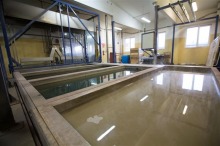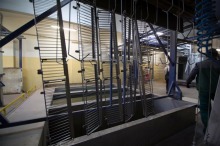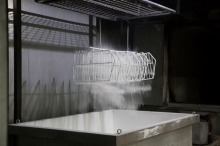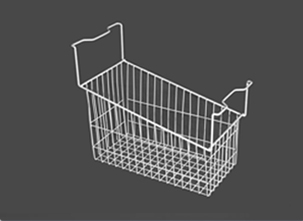We also offer services in the scope of dry powder coating and fluidised bed coating of metal elements.
DRY POWDER COATING
Dry powder coating consists in application of paint onto metal, previously subjected to cleaning process, in the form of powder, by way of electrostatic spraying. Particles of paint loaded in a spray gun settle on earthed, coated object. Coated elements with applied coat are subsequently put in the furnace, where at the temperature of 200 degrees melting and hardening of the coat takes place. Time of hardening in the furnace depends on recommendations and parameters of a given kind of paint. Thickness of a coat is in the range from 60 to 120 microns. With the application of the entire wide range of all kinds of paints available in the market for dry powder coating, a coat may be resistant to corrosion, chemicals, high temperature and mechanical damage.
Kinds of paints:
- epoxy, resulting in hard coat, resistant to scratching, impact, etc. and to impact of chemical agents
- polyester and epoxy, resulting in a coat resistant to overheating (e.g. heaters may be coated with them), they may be applied for coating of objects in direct contact with food products, e.g. household equipment
- polyester, designed for coating of objects exposed to atmospheric impact (e.g. maintenance and garden equipment, aluminium window and door joinery, elements of building facade, parts of bicycles, motorcycles, etc.)
FLUIDISED BED COATING
High-quality, polyethylene-based powders ICORENE® are aimed for coating of wire product.
Properties of polyethylene:
- no absorption of fluids
- perfect chemical resistance
- low friction coefficient
- high mechanical resistance
- high flexibility – impact strength
- good slide characteristics
- no hydroscopicity – no water absorption
- vibration damping feature
- physiologically neutral
- polyethylene may have contact with food products, it has the attestation of the National Institute of Hygiene (PZH), and it meets the EU guidelines
Fluidized bed coating is the process in which pre-heated metal elements are immersed in a container filled with polyethylene powder. Particles of powder stick to the hot surface of coated elements and melt, thus forming a coat.








